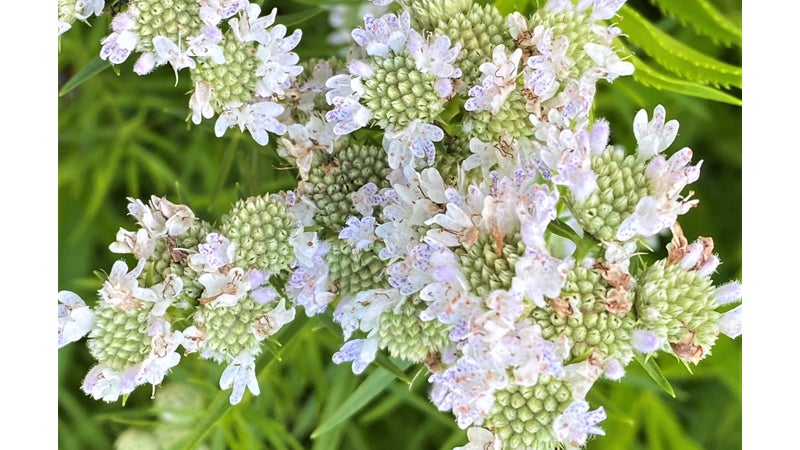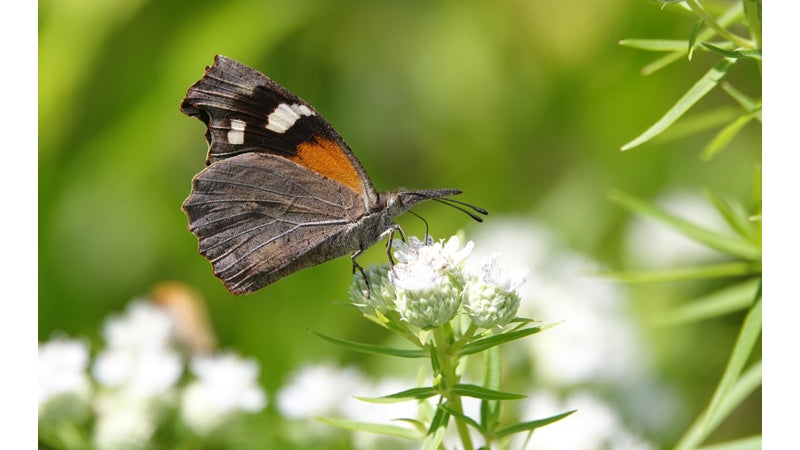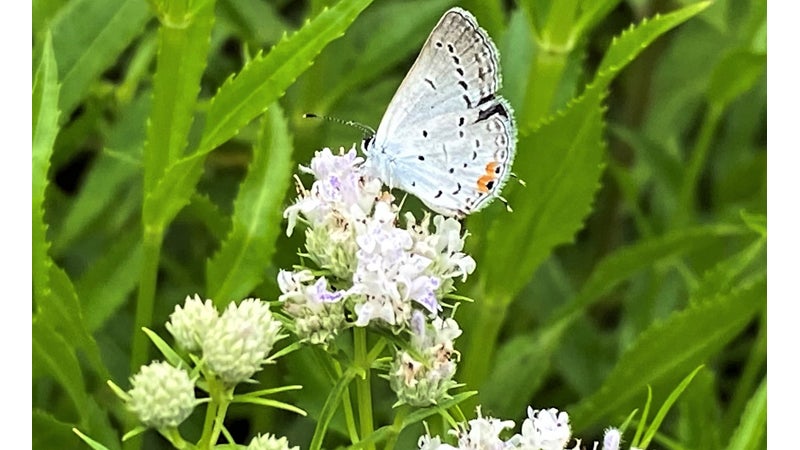Narrow-leaf Mountain-mint is most attractive, easy to grow
Published 6:15 pm Wednesday, August 4, 2021
|
Getting your Trinity Audio player ready...
|
By Betsy Washington
All of the species of Mountain-mints are virtual pollinator and butterfly magnets. They are always “humming” with butterflies and pollinators, and their handsome foliage and long-lasting flowers make them summer garden stars.
Of the 12 species in Virginia, Narrow-leaf Mountain-mint is certainly one of the most attractive and is one of the easiest to grow. It is found in both Richmond and Lancaster counties in Northern Neck and most other counties in Virginia. It is common in the mountains and Piedmont but occurs less frequently in the coastal plain.
Narrow-leaf Mountain-mint is a native perennial wildflower found in a variety of habitats, from wet to dry meadows, fields, thickets, open woodlands, riverside prairies and even along roadsides and dry pine barrens. It is tolerant of a wide variety of soils, from dry to occasionally wet, clay to sandy, and even shallow, rocky soils. While it tolerates part shade, it prefers full sun and has no serious pest or disease issues. As a bonus, its distinctively “minty” aromatic foliage deters herbivores like deer and rabbits.
As the common name suggests, this species can be distinguished from other Mountain-mints by its fine, linear leaves that are almost needle-like. The leaves are less than 1/4-inch wide (but often much narrower) and are soft, smooth, with no hairs nor teeth along the margins. Each leaf has a distinct midrib, and pairs of leaves are arranged opposite each other along the stems.
Narrow-leaf Mountain-mint typically grows two to three feet tall and wide, and its fine foliage gives it a delicate, airy look, almost cloud-like, which contrasts beautifully with many other perennials. Like other mints, it has rhizomatous roots that can spread to form small colonies, attractive to pollinators that prefer large patches of nectar-rich flowers and pollen.
The small white-to-pale lavender flowers are held in dense clusters of small flat, button-like flower heads surrounded with small tubular flowers. The corolla of each flower has two lips, an upper and a lower lip, with three lobes. Each flower is only 1/4-inch long and is dotted with purple spots. The anthers are purple, adding another dash of color. These small flowers are surprisingly beautiful when viewed closely, so get out your hand lens.
All parts of the plant have a minty aroma when bruised or crushed, and the dried leaves are often used to make a fine tea or for flavorings. When crushed and rubbed on the skin, they supposedly make an effective mosquito repellent, although I have yet to try it.
Like other Mountain-mints, Narrow-leaf Mountain-mint blooms for most of the summer, from June to August. They attract a wide variety of bees, including both long- and short-tongued bees, loads of butterflies, especially the smaller skippers, flower and bee flies and a plethora of other beneficial insects. The long-lasting blooms also make great cut flowers. What’s not to love?
Narrow-leaf Mountain-mint is adaptable and beautiful and is easy to grow in a variety of soils with no serious pest or disease problems. It is excellent when planted in pollinator, herb or even rain gardens and is a “natural” for planting in meadows, both dry and damp, and for naturalizing, as well as planting, around a pond, along stream banks or even in dry, gravelly soils.
Because of its long-lasting beauty and adaptable nature, Narrow-leaf Mountain-mint was selected as the North Carolina wildflower of the year in 2019. Be sure to try planting this beautiful Mountain-mint in your own garden, and be prepared to be dazzled all summer long by butterflies, bees and by admiring friends that are sure to want some for their own gardens.








